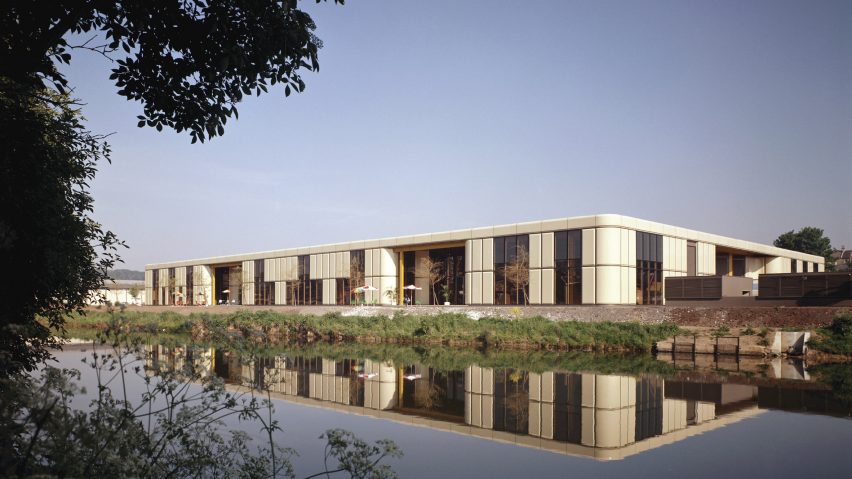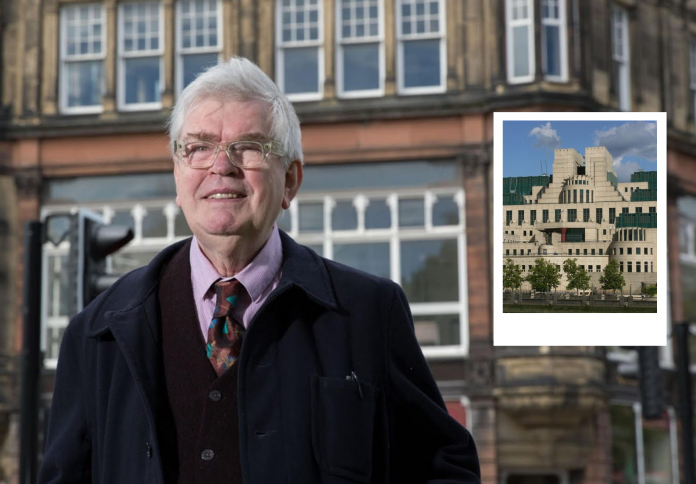Sir Terry Farrell, one of Britain’s most prolific and influential architects and urban designers, and a pioneering figure in Postmodernism, has died at the age of 87. His half-century-long career was marked by bold, instantly recognizable structures, from the MI6 Building—London’s famous “spy castle”—to complex masterplanning projects that shaped cityscapes globally. Known for embracing the labels “maverick and non-conformist,” Farrell famously resisted joining the architectural “establishment,” instead committing to a responsive, ethical, and human-centric approach to design and urbanism. The passing of this titan, just weeks after that of his long-time collaborator, Sir Nicholas Grimshaw, leaves an undeniable void among the UK’s most significant contributors to the built environment and urban planning policy.
The Pioneer of British Postmodernism
Sir Terry Farrell’s professional journey began with a significant partnership with Sir Nicholas Grimshaw, forming the Farrell/Grimshaw Partnership in 1965. During this early phase, he contributed to notable examples of British High-Tech architecture, such as the renowned Herman Miller Factory in Bath. However, after splitting from Grimshaw in 1980 to establish his own firm, Terry Farrell & Partners (now Farrells), his stylistic focus shifted dramatically.

Farrell became the UK’s leading proponent of Postmodernism, a movement that rejected the austerity and functionalism of High Modernism. His works throughout the 1980s and 90s became expressive, decorative, and narrative-driven. A key early project in this transition was the TV-am studios in Camden Town, London (1981). This conversion of a derelict garage into a television headquarters became famous for the giant “eggcups” installed on its roof—a whimsical, non-conformist detail that served as both a branding icon and a bold statement on urban design opportunism.
The Icons That Shaped the London Skyline
Farrell’s designs became inescapable fixtures of the London landscape, frequently showcased in news broadcasts and popular culture. His most universally recognized work is arguably the SIS Building (MI6 Headquarters) at Vauxhall Cross (1994). With its stepped, fortress-like form resembling a contemporary Aztec temple, the structure instantly became a global icon due to its recurring role in the James Bond film franchise.

Beyond the MI6 headquarters, two other landmark projects cemented his reputation as an architectural provocateur. Embankment Place (1990) is a massive office complex built directly above Charing Cross Station. Its distinctive outline intentionally echoes the silhouette of a Victorian train shed, a contextual move that delighted many but irked modernist purists. Meanwhile, Alban Gate (1992), a tower that straddles London Wall, was conceived by Farrell as an exercise in three-dimensional urban axes, emphasizing movement and connectivity across the city.
From Building Architecture to Comprehensive Urban Planning
Farrell was unique among his contemporaries for his relentless focus on urbanism, backed by his Master’s degree in Urban Planning from the University of Pennsylvania. He approached architecture not merely as the design of standalone objects but as an exercise in urban design. He was a steadfast advocate for regeneration, adaptive reuse, and mixed-use development over the wholesale demolition that characterized earlier planning eras.

His enduring commitment to cities helped shape national policy. His major masterplans for areas like the Greenwich Peninsula, Paddington Basin, and the highly successful regeneration of Newcastle Quayside established models for urban renewal that prioritized conservation, public life, and seamless integration with the existing urban fabric. He believed that architecture and urbanism must evolve through an ongoing dialogue with history, place, and community, moving toward a “kinder, less doctrinaire world.”
International Imprint and Asian Influence
Starting in the 1990s, Terry Farrell expanded his influence internationally, notably in Asia, where his firm established an office in Hong Kong. His practice undertook mammoth projects ranging from bold cultural icons to critical infrastructure, showcasing his ability to operate at a global scale.
Key Asian works include the Peak Tower in Hong Kong, a massive tourist destination whose unique form was the winning design in an international competition to exploit the spectacular views. On the infrastructure front, Farrells designed the Incheon Ground Transportation Centre in Seoul and the Guangzhou South Railway Station in China, which at one point was the largest railway station in Asia. These projects, along with massive air-rights developments like the Kowloon Station Development in Hong Kong, demonstrated Farrell’s capacity to integrate high-density commercial architecture with complex transportation hubs.
The “Non-Conformist” Legacy and The Farrell Centre
Despite being highly decorated—appointed CBE in 1996 and knighted in 2001—Sir Terry Farrell actively cultivated his reputation as a maverick who operated outside of the established architectural “club.” His legacy rests not only on the physical scale and cultural significance of his buildings but also on his efforts to reform the planning system.

His influence was formalized in The Farrell Review (2014), a comprehensive national review of architecture and the built environment that delivered crucial policy recommendations to the UK government. Crucially, he made a generous donation of his practice’s entire archive and capital toward the creation of the Farrell Centre at Newcastle University. Opened in 2023, the Centre acts as an “urban room” dedicated to sparking public debate on architecture and the future of cities, ensuring that his life’s work—advocating for more responsible, human-focused design—will continue to inform and challenge future generations of architects and planners.










